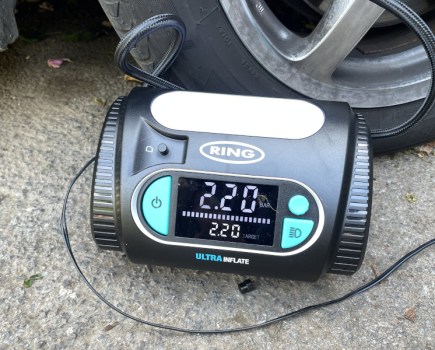A failure to proceed in winter can be more than inconvenient; a recent study of OFCOM data showed that huge swathes of Britain’s roads have no mobile phone coverage at all. If recovery is the only option, what can you do? Jon Burgess investigates.
For those reassured by the advances in communications technology, bear these recent RAC Foundation findings in mind: 4561 miles of routes in the British Isles do without 2G reception, the lowest standard you can get away with in order to make a call or send a text – hardly ideal if your classic grinds to a halt…
The worst rural stretches to call for help from include the A93 in Scotland, the currently flood-damaged A591 in Cumbria, the A494 in Wales and the A149 in East Anglia. Beyond that, second generation (‘2G’) coverage is ‘patchy’ over a further 28,975 miles of roads; some providers can get a signal, others can’t. Sporadic coverage is to be expected because, as telecoms expert Raymond Finot explains, cars travel through (and break down in) places people rarely reside: “All of the operators manage coverage in terms of population coverage percentages. Therefore if you are in a place where no one lives, it will not benefit the phone company to meet their commitments by providing a percentage of population coverage. They will always target the locations where there are the most residential homes, as this will increase their population coverage number for adverts.”
Bad weather won’t affect the transmission of a mobile phone network signal – but poor conditions could affect how well the network’s masts perform. Your proximity from these ‘towers’ is also important: In the same way a radio struggles to unscramble a weak FM signal, your phone also suffers from ‘interference’: “Among other things, distance and line of sight from a mast is a factor,” according to network engineer Andrew Hill. “Electro-magnetic radiation (EMR) from other stuff can walk all over mobile signals too, even if the frequency is vastly different; it’s sometimes called ‘bleed over’. For example, we have a brute of a Wireless Access Point at the power station I help maintain– being in the same room as it wipes out mobiles altogether. Even being some distance away obliterates the signal.” Fine – but most modern phones operate on third generation (‘3G’) or fourth generation (‘4G’) networks. Do they fare any better in remote locations?
Sadly, the answer appears to be no, at least as far the OFCOM data obtained by the RAC Foundation is concerned. Incongruous looks aside, a growing number of classic motorists – young and old alike –use their phones as satellite navigation devices, relying on the 3G networks (which incorporate mobile internet services) to supply their handsets with information.
3G reception is similarly hit and miss, with ‘towers’ once again being the limiting factor; 14,554 miles’ worth of roads have no 3G support, with intermittent reception (depending on your network provider) on a further 111,679 miles of carriageway. That’s a staggering 45 per cent of the tarmac across Britain.
For 4G users, there’s a silver lining. Raymond Finot told Torque Monkeys that as more mobile phones are able to use ‘Voice over LTE’ (as 4G is sometimes called) the signals handsets receive will be stronger. “Without wishing to get too technical, Voice over LTE phones will receive signals on a lower frequency than current models, meaning signals will travel further,” Andrew confirmed.
For the time being, 4G handsets are the worst off for reception in Britain, with 56 per cent of our roads being black holes as far as handsets are concerned; we lag behind Europe in this regard, but should be up to speed by the middle of next year.
2G offers your best chance of reception in case of an emergency. Whatever the network, the providers share masts to make sure the call goes through. It’s worth noting that 999 (or 112 in Northern Ireland) can’t be called without a SIM card; the days of contacting the ambulance, fire service or police SIM-free have sadly passed.
Andrew recommends you buy a number of ‘pay as you go’ (PAYG) SIMs from all the major providers – this way, you have a better chance of contacting relatives, the breakdown companies or the emergency services should your classic become stationary in an area of poor or indifferent 2G coverage. “You don’t have to have any credit on your PAYG SIM to make an emergency call – the phone just has to register the fact there’s a SIM inside it.”
Just be aware that prepay SIMs that haven’t had credit applied to them will expire; it will say on the pack ‘must register before x date’. “It’s usually about a year or so,” confirmed Andrew.
Torque Monkeys strongly advises against buying devices online that claim to boost your mobile phone signal (sometimes known as ‘repeaters’) in weak areas – and Andrew agrees. “It’s a big no-no. Use of such devices is illegal in the UK, and can attract upwards of a £5000 fine from OFCOM.” You’re never going to be completely covered in terms of your mobile signal, so what can you do to help things along? At the very least, keep your handset charged by way of a cigarette lighter adaptor or power pack. As Andrew states: “A topped-up phone seems like a simple thing, but a nearly flat handset isn’t much use at grabbing the network.”
WHAT DO YOU THINK?
Do you drive your classic with a mobile phone in the glove box? Are you concerned about mobile phone signal coverage this winter? How do you cope in an area of poor reception? Whatever your views, drop us a comment below.




